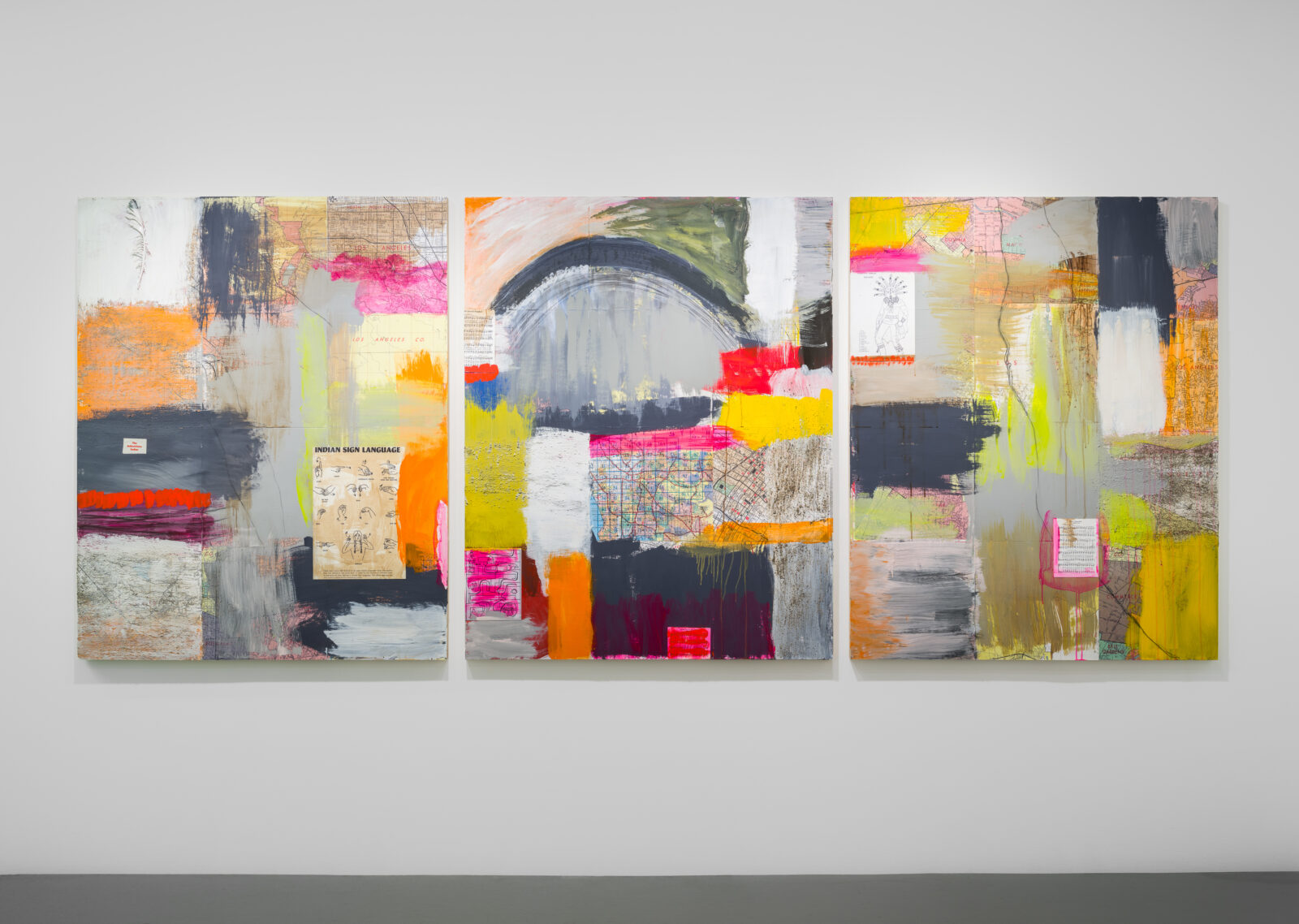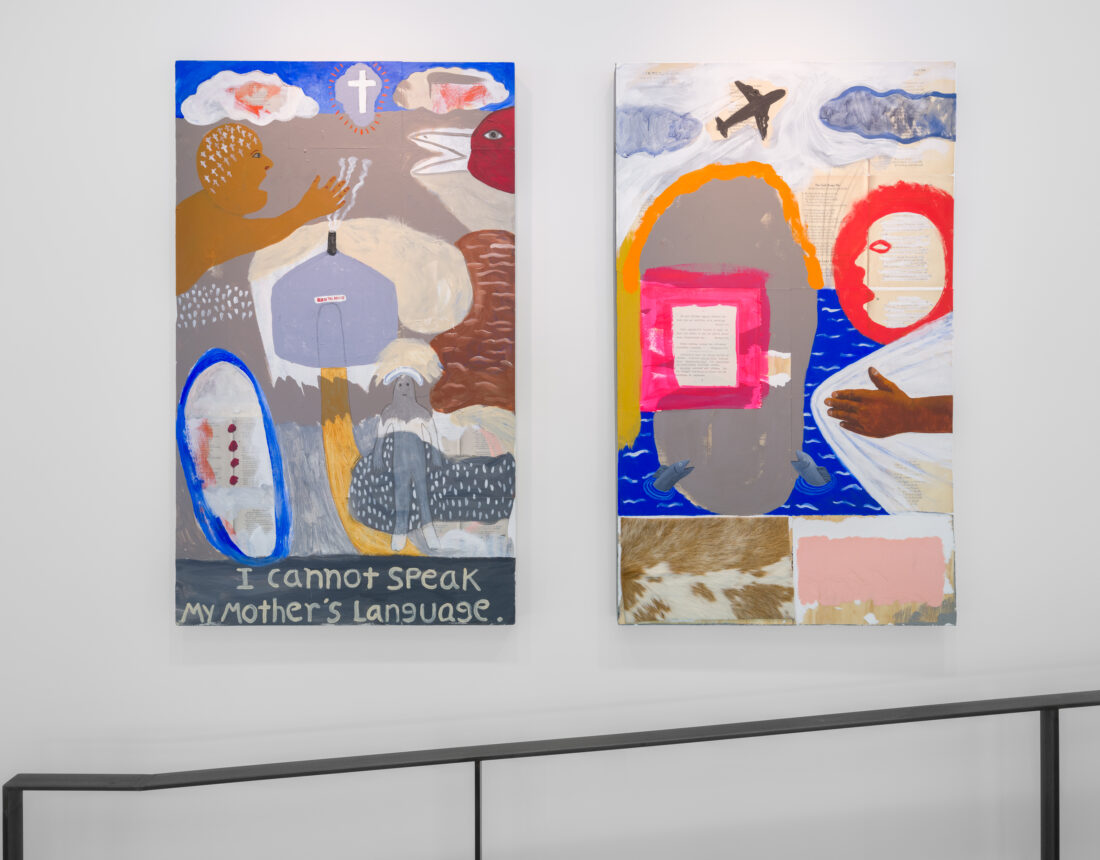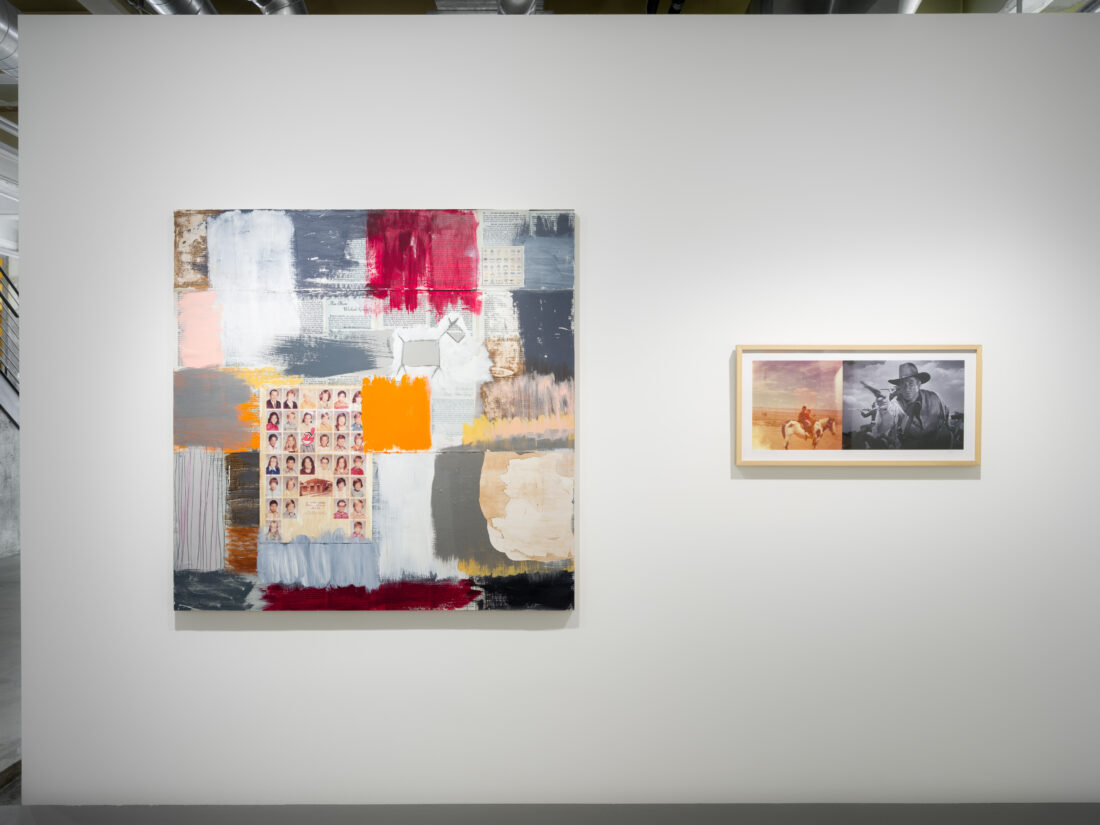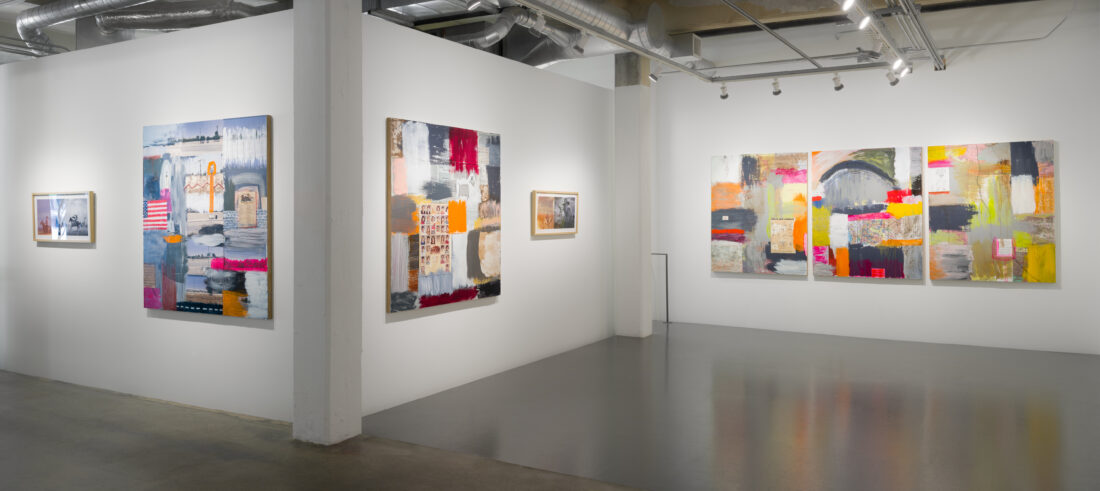Residual Effects: John Feodorov on the impetus behind Assimilations

John Feodorov was sitting in the Boise airport after giving a lecture at the University of Idaho when a phrase suddenly came to him: I cannot speak my mother’s language.
“I had no idea what it was, no idea what, if anything, I would do with it—but I liked it,” he says. As it turns out, those words set in motion an all-new body of work for the multi-media artist.
Back home in Seattle, he pulled out a book he’d inherited from his mother—a late 19th- or early 20th-century Pentecostal hymn book, written in Navajo. “Navajo is not a written language,” says Feodorov, who is of mixed Navajo/Diné and European heritage. “The book was used by missionaries when they were trying to Christianize Natives.”
He scanned the book’s pages, adhered them to a wood panel, and started to respond to them with paint—spontaneously.
“I wanted to stop thinking so damn much,” he recalls. After decades of making conceptual work, including installations, performance, and video, he’d recently found himself drawn to the abstract paintings of Willem de Kooning and Philip Guston, and feeling jealous. “I just wanted to paint and not, like, have an idea, and then paint that idea. [This process] was a way to trick myself into not being frustrated staring at a blank canvas. It was a way that I could actually talk about something without necessarily thinking about something.”

The wood panel with the hymns became the mixed-media painting “I Cannot Speak My Mother’s Language,” the prototype for Assimilations, a new series now on view at Gallery 4Culture through June 27. Assimilations incorporates found materials from several old religious, reference, and cultural books, collaged into the artworks amid Feodorov’s brush strokes. The paintings hang alongside a series of the artist’s prints titled Ambivalence, which combine personal family photos with stills from old Hollywood Westerns. Together, the artworks in the exhibition examine the complex residual effects of colonization and dislocation.
Feodorov’s mother grew up on the Navajo reservation in New Mexico before being separated from her family and sent to boarding school. She later headed to Long Beach, CA, to work in the shipyard during World War II, married a white man, and moved to the Los Angeles suburbs. She became a Jehovah’s witness when Feodorov was a baby.

“There are aspects of the Native American experience that aren’t really talked about,” he says of the distance assimilation puts between “city Indians” and their roots. “It’s like, I wasn’t raised within the four sacred mountains. I wasn’t raised understanding the geography around me as having mythological significance. I couldn’t become a born-again Navajo, you know?”
This personal experience is not unlike what all immigrants and refugees go through, says Feodorov, who also works as an associate professor at Western Washington University, where he has students with similar experiences to his. They haven’t necessarily been to their families’ homeland and, like Feodorov, don’t speak their parents’ language. “We all have this sense of disconnection,” he says.
Whether in abstract paintings or pop-culture prints, Feodorov aims to create visual interest that seduces the viewer into a deeper conversation about identity and belonging. For him, a familiar image can be the hook that draws people in.

Which explains some of the visual references in his prints. Feodorov loved watching Westerns as a kid, and while he was too young then to articulate the unease he felt watching Indians get shot off their horses, he captures that tension in Ambivalence. His mixed-media painting “My Life As a Suburban Ind’n” started with an image from a 1960s TV comedy called F Troop that was a favorite in Feodorov’s family.
“I still think it’s kind of funny,” he says, explaining the show’s odd appeal. “There were the cavalry and there were the Indians, and all the Indians were [played by] Italians. But the cavalry was ridiculous, and the Indians were ridiculous. No one was smarter than the other.”
Throughout his career, Feodorov has often been called humorous—though that isn’t his goal. “If there is a laugh,” he says, “I hope it’s an uncomfortable one.”
Through its many layers of meaning, the work in Assimilations ultimately reflects the artist’s growing clarity about the value of his perspective, a clarity found over time and through much consideration.
“When I was in my early 20s, just beginning university and interested in art, I had no idea that I had anything to say. I mean, I was very conscious of being Native, but I didn’t think that I was Native enough to have any important insights,” Feodorov says.
“It took me a long time to realize that I actually am the Native experience.”
Heads up! This fall, Western Washington University’s Western Gallery will present a retrospective of John Feodorov’s work, curated by Tacoma Art Museum’s Faith Brower and featuring pieces that date back to the early 1980s.
